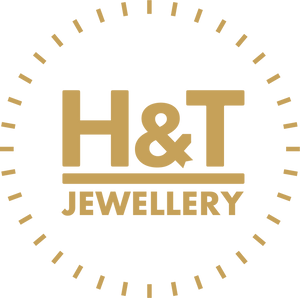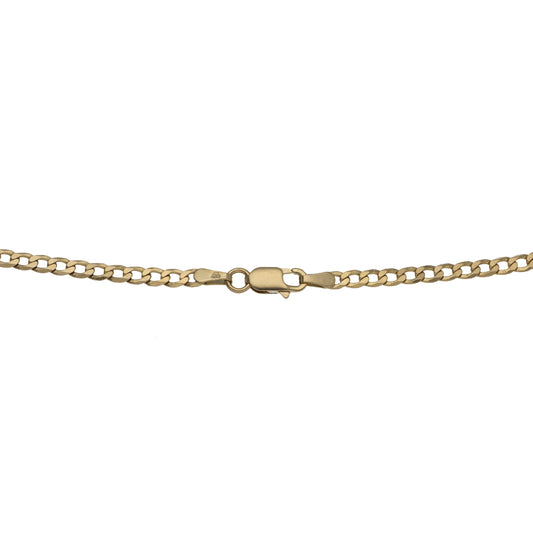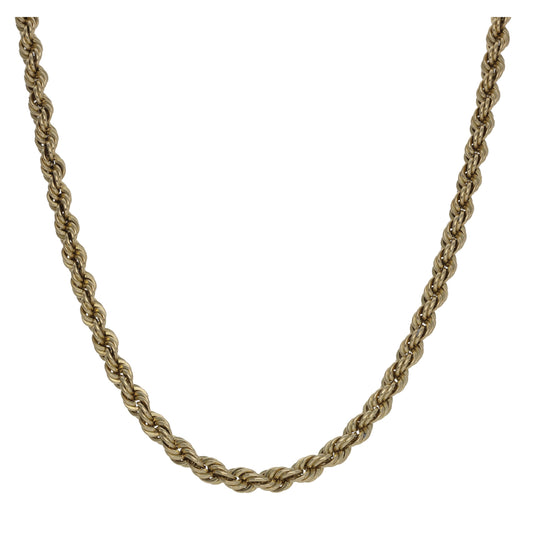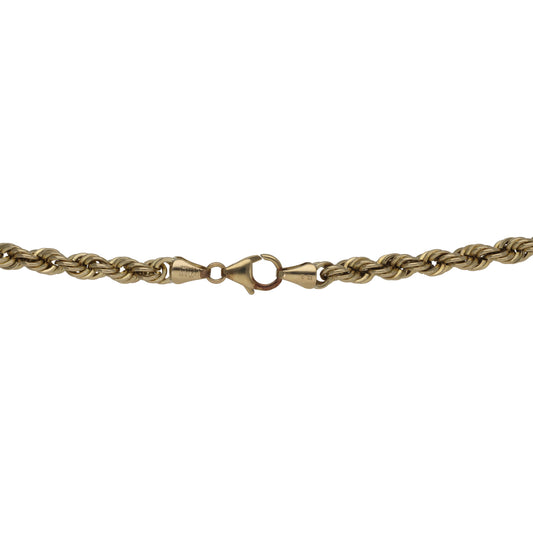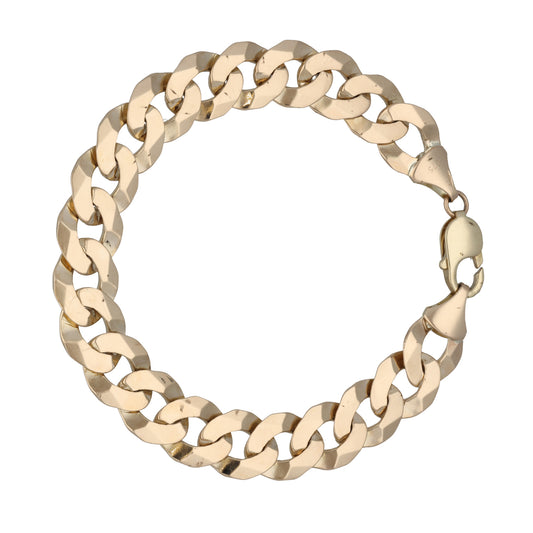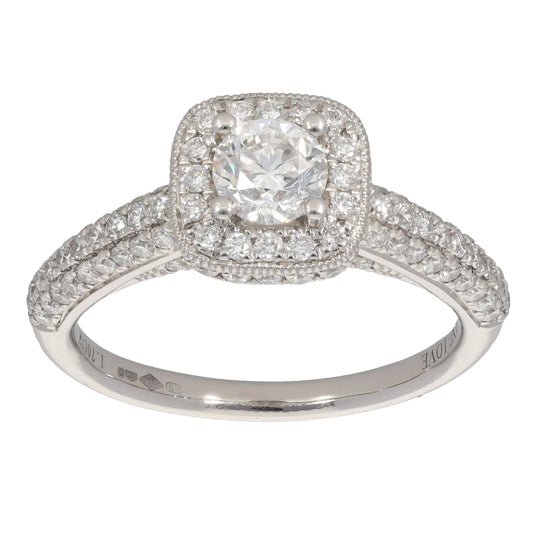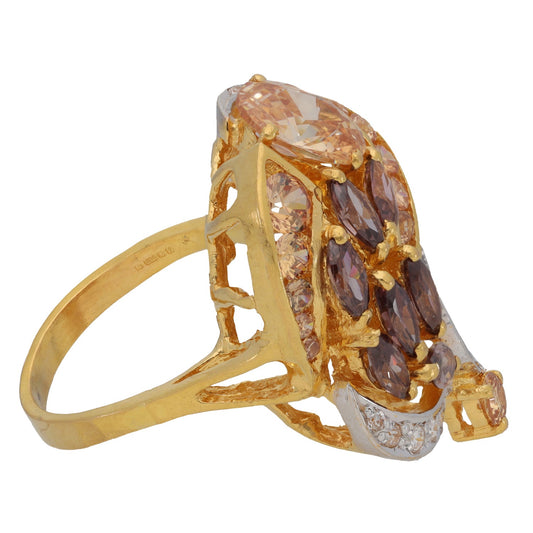What do hallmarks tell us?
Sponsor’s Mark
This is a compulsory hallmark; one which identifies the ‘sponsor’ of the piece. The sponsor is the person or company who sends the item to the nearest assay office for testing, appraising and hallmarking. It’s useful to know exactly where a piece has come from, and this allows you to find out.
The sponsor could be the manufacturer of the item, the importer, the wholesaler or the retailer; as long as they are registered with one of the four UK assay offices. As there are so many different sponsors it would be far too long to list them all here, but the mark usually comes in the form of 2 or 3 initials within a shape of some kind.
Millesimal Fineness Mark
The second compulsory mark is the one that should give you the best idea of the possible value of your item. It will show you the purity of the metal in parts per 1000. As we know, precious metals are often mixed with small amounts of other metals to make them stronger for everyday wear, so the higher the number, the more gold, silver or platinum your piece contains, and therefore the more value it holds.
Gold (elongated octagon frame)
- 375 – 9 carat gold
- 585 – 14 carat gold
- 750 – 18 carat gold
- 916 – 22 carat gold
- 990 – 24 carat gold
- 999 – Pure gold
Silver (oval frame)
- 800 – Silver pieces made in Italy or Germany are often made with this ratio
- 925 – Sterling silver
- 958 – Britannia silver
- 999 – Pure silver
Platinum (rectangle with pointed top frame)
- 850 – 85% platinum
- 900 – 90% platinum
- 950 – 95% platinum
- 999 – Pure platinum
Assay Office Mark
An assay office is where precious metal items are tested and hallmarked under strict regulatory conditions by UK law. The UK has four assay offices dotted around the country; one in London, one in Birmingham, one in Sheffield and one in Edinburgh.
You can find out where your piece was appraised by finding the assay office mark, which is a compulsory mark under current UK law. The assay office that appraised and hallmarked your piece of jewellery is likely to be one of these:
- Birmingham – an anchor within an octagon shape
- Edinburgh – a castle within a crest shape
- London – a leopard’s head within an octagon shape
- Sheffield – a rose within an octagon shape
If you have something different, it may be because the piece was made overseas. See ‘International Assay Office Marks’ below for further information.
Date Letter
Even though this is no longer a compulsory hallmark, many jewellery makers will still include this on their pieces, and they can be found commonly on older precious metal items. The date is denoted by a letter of the alphabet and can be in upper or lower case, in a variety of ‘fonts’ and framed within a range of shapes, depending on the year.
As there are only 26 letters of the alphabet and date hallmarks have been used for around 240 years, each letter could mean a number of dates – it’s the font and the surrounding shape that helps you to narrow down the exact year. There are too many to list here, but some online research should give you an idea of what you’ve got. Alternatively, bring it into your local H&T store, where we can help you identify the correct year.
Traditional Fineness
The traditional mark is still sometimes used and is an optional hallmark, so it will not always be present. This mark is simply a way for you to confirm which precious metal your piece is made from. Here’s what to look for:
- Gold = a crown within an octagon shape
- Sterling Silver = a lion facing left within an octagon shape
- Britannia Silver = Britannia with trident and shield, facing left within an octagon shape
- Platinum = a royal orb within a pentagon shape
- Palladium = an ancient soldier with a fringed helmet on, facing right within a square shape
Commemorative Marks
In the UK, some jewellery pieces have an additional commemorative mark which is used to celebrate major national events. Any piece of jewellery or precious metal item carrying one of these marks may be more collectible, and therefore more valuable than you may have originally thought. The most common are:
- Silver Jubilee 1935 – George V and Queen Mary facing left within an oval shape
- Coronation 1953 – a young Queen Elizabeth II facing right within an oval
- Silver Jubilee 1977 – Queen Elizabeth II facing left within an oval
- The Millennium 1999-2000 – a cross with a dot in the middle, and ‘2’, ‘0’, ‘0’ and ‘0’ on the arms
- Golden Jubilee 2002 – Queen Elizabeth II facing right within a flat-bottomed arch shape
- Diamond Jubilee 2012 – Queen Elizabeth II wearing a large crown, facing right within a diamond, which itself is within a circle.
International Assay Office Marks
If the piece of jewellery you’re looking at has been made abroad, then it may have an international assay office mark present. The International Convention is a group of countries who have their own strict rules on hallmarking. This means that each country within the group recognises the hallmarks of the other members as being legitimate.
The UK is a member, along with the following countries; a brief description of their most common assay office mark is also included:
- Austria – a bold ‘W’ shape on a tri-headed shield
- Cyprus – a boat with sail
- Czech Republic – a capital ‘P’ in a square
- Denmark – an oval mark containing 3 towers
- Finland – a crown within a heart
- Hungary – a capital ‘H’ in an oblong box
- Ireland – a figure sitting facing to the left
- Israel – a simple flower or stringed instrument
- Latvia – a crowned woman facing left within a diamond shape
- Lithuania – a man on a horse holding a sword
- The Netherlands – a horse head within a circle or a NL ASSAY OFFICE round stamp
- Norway – a heraldic lion facing left within a circle
- Poland – the Polish crest within a circle
- Portugal – a bird or other animal framed with the millesimal fineness mark
- Slovak Republic – a partial circle surrounding a twice-crossed line, with ‘SK’ to the left and ‘X’ to the right
- Slovenia – the relevant chemical symbol (Au, Ag, Pt) within a shield
- Sweden – three crowns outlined in a ‘mickey mouse’ shape
- Switzerland – the head of a large dog facing left within an unequal heptagon.
Other Marks
Your jewellery may have other hallmarks present in addition to some of those described above. Even those who know what they’re looking for can find tricky to identify some of the older, smaller and more worn-down hallmarks, so don’t worry if you can’t seem to work out exactly what you’ve got.
If you’re interested in a quote for any unwanted gold, silver or platinum jewellery, why not bring your item(s) down to your local H&T store? We can give you a cash offer on the spot after a short inspection of your item, and we’ll certainly be able to tell you more about the hallmarks in the process. Find your nearest H&T branch here – we have 250 stores nationwide.


